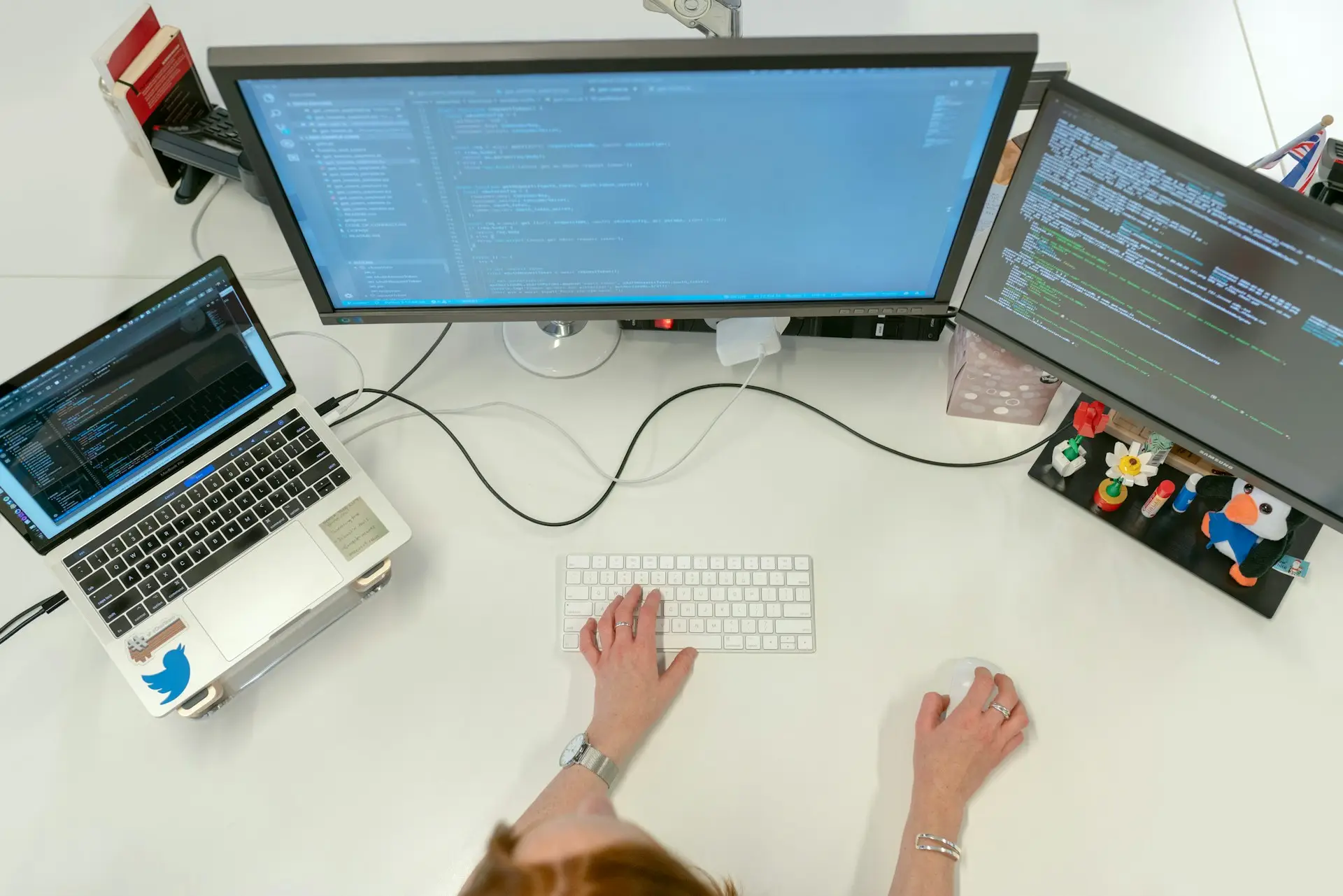Did you use social media today or watch a movie last night? Then you will probably have used the cloud. The idea of the cloud started in the 1960s but is now an exploding market worldwide, with an expected public cloud computing market size of 675 billion dollars in 2024. In 2023, 45.2% of EU enterprises bought cloud computing services, mostly for hosting their e-mail systems, storing files electronically and using office software.
As cloud computing services are growing in importance, a lot of companies are moving towards a cloud-based way of working, which offers various benefits. Our IT recruitment expert, Jan Leijenhorst, will share his insights on the cloud computing trends of 2024 so you can stay ahead of the curve. How can you stay ahead of the competition, and how can you optimise your business? Let’s find out!
What is the Cloud?
Everyone talks about cloud services, but what are they actually? The term ‘cloud computing’ describes the delivery of on-demand computing resources like hardware, storage, databases, networking, and software to businesses and individuals via a network (usually the internet). In 2024, three deployments of cloud computing are available:
- Public cloud: The computing infrastructure is located on the premises of third-party cloud service providers such as Google Cloud or Amazon Web Services, which own and manage cloud services like storage or networking via the internet.
- Private cloud: One organisation owns and manages cloud services, offering isolated access to a single customer.
- Hybrid cloud: This type of cloud combines at least one private computing environment with one or more public clouds. This approach allows you to utilise resources and services from various computing environments, enabling you to select the most optimal solution for different workloads.
You can also choose three modules based on flexibility, management, and control:
- IaaS (Infrastructure as a Service): This offers access to the basics of IT infrastructure to companies, such as computers, data storage space, and networking features.
- PaaS (Platform as a Service): This consists of ready-to-use hardware and software which companies can use to develop, run, maintain, and manage applications.
- SaaS (Software as a Service): This service provides software applications to companies, which are run and managed by cloud vendors.
The concept of delivering computer services to multiple people who can share the same resource via networking started with Professor John McCarthy, who suggested that one day computing would be sold as a utility. Later in the 1960s, IBM launched a technology that allowed users to share the same computer resources through time-sharing, and APRANET was introduced.
The 1970s and 1980s welcomed new advances in virtualisation, networking and storage such as email, network operating systems, storage tapes with 200 megabytes capacity and 100.000 computers were connected to the internet. The 1990’s was a pivotal point with the launch of the World Wide Web and the term ‘cloud computing’. After that, numerous services were developed by Amazon (AWS), Microsoft (Azure Services) and other companies, being the first generation of cloud services.
Today, numerous cloud computing services are available for users, such as container services, hybrid clouds, and the European Grid infrastructure. If cloud computing services were developed from an idea in the 1960s to a life-changing global service in only 60 years, one can imagine the future possibilities of this amazing technology.
Benefits and Limitations of the Cloud
Although moving to the cloud is a big step for companies, this investment is a boost for your company because for several reasons:
- Cost saving: In comparison with owning and managing your own on-premises network, a cloud server is 79% cheaper to run. You don’t need to worry about construction costs, energy bills, and employee costs because a third party is handling this for you, and you only pay for the services you actually use.
- Security: Because the cloud provider manages the cloud service, they do not only implement the newest security technology, they also employ security experts and automate maintenance to ensure your data is secure.
- Flexibility: Companies can expand and scale down cloud computing services according to the fluctuating workload.
Cloud Computing Trends 2024
Edge Computing Expansion
Edge computing, which processes information closer to the location where it’s collected, is becoming more popular in 2024. The most prominent goal of this cloud-related paradigm is to improve response times by striving for real-time data processing.
Two factors are important to achieve real-time data processing. First, only the most important data is transmitted to the central data centre and processed there. Most of the data will be processed as close as possible to the device where the data is collected, such as a wearable real-time heart monitor.
The second important factor is wireless 5G, which enables the handling of vast amounts of data going to and from the device and data centres. As a result, large amounts of data can be processed simultaneously with fewer delays. Examples of edge computing solutions include smart cameras, autonomous vehicles, and predictive maintenance.
AI-as-a-Service
The implementation of AI is more important than ever to stay competitive, which is why organisations are massively investing in AI infrastructure and tools. Unfortunately, not every company has the tools, knowledge, or budget to invest in AI tools. That’s where AIaaS (Artificial Intelligence as a Service) comes in as a solution. AIaaS essentially refers to the outsourcing of artificial intelligence capabilities by a third-party provider. This service allows companies to implement innovative AI tools without the need for large investments or in-house development. Additionally, it makes it easier to adapt a company’s infrastructure.
2024 is the breakthrough year for this technology due to rapidly changing industry needs and customer expectations. AIaaS offers a range of benefits for companies, such as access to bots and virtual assistants, machine learning frameworks, application programming interfaces, and AI of Things, which improve customer experience and team productivity. Despite the many benefits of this cloud service, there are some concerns to consider, such as data privacy, AI regulations, and unreliable data.
Hybrid and Multi-Cloud Strategies
As the cloud gained importance, so did the search for cloud optimisation. Hybrid and multi-cloud strategies are two options a company could choose from. A hybrid cloud means using different cloud environments, such as public, private, and on-premises clouds. Multi-cloud has a similar idea of mixing but does so with different providers, for example, Google Cloud Platform, AWS, and Alibaba.
With hybrid and multi-cloud strategies, businesses spread out their different workloads across various cloud providers. The biggest advantages of this strategy are flexibility, optimisation, and cost reduction. The multi-cloud approach allows companies to leverage the expertise of different cloud providers, ensuring they get the best service possible. Hybrid clouds, on the other hand, ensure that data from private clouds integrates seamlessly with public clouds. The 2024 State of the Cloud Report by Flexera states that 89% of their respondents use multi-cloud strategies, which is a clear sign that companies are embracing hybrid and multi-cloud strategies.
Enhanced Cloud Security
The global average cost per data breach amounted to 4.45 million U.S. dollars in 2023, raising concerns with companies using cloud services. That’s not a surprise, considering that the number of cyberattacks increased by 72% in 2023 compared to 2021. Using cloud services also means sharing confidential information with third parties, which is very attractive to hackers. That’s why, in 2024, cloud security is a priority for companies and cloud providers, who are protecting their data as much as possible. High-profile data breaches often result from misconfigurations, such as unsecured S3 buckets or faulty access controls. Additionally, insider threats and privileged access management present considerable risks, as malicious insiders or compromised accounts with elevated privileges can inflict substantial damage.
Companies and cloud service providers can enhance their cloud security by implementing a multi-layered protection plan. This involves setting up different technologies, processes, and policies at various levels to maximise data protection.
Don’t forget that cloud service providers usually follow a shared responsibility model, which implies that the customer is partially responsible for data protection, such as access management. A few examples of cloud security options are Data Loss Prevention (DLP), Public Key Infrastructure (PKI), data encryption, and security audits.
Serverless Computing
Serverless computing is gaining traction as it allows developers to build and run applications without managing the underlying infrastructure. A serverless vendor charges a company based on their computation usage rather than the amount of bandwidth or number of servers, because the service is auto-scaling. Because companies don’t need to worry about having enough server space, they save a lot of money and can scale up or scale down according to their workload. Additionally, companies can modify code and create functions more efficiently and simply, which reduces time to market.
As a result of this effective and flexible model, the serverless computing market is expected to register a CAGR of over 23.17% between 2024 and 2029. A few examples of applications and systems where serverless computing can be useful are stateless applications, real-time data analytics, business process automation, and batch processing.
Sustainable Cloud Services
Sustainability is becoming a critical focus for cloud providers. In response to the global emphasis on reducing carbon footprints, cloud companies are investing in renewable energy and designing energy-efficient data centres. Especially since data centres are struggling with energy supply and rising prices, being energy-efficient is not only a great investment but also a necessity in order to stay innovative and competitive. According to a study by NielsenIQ, 78% of US consumers find a sustainable lifestyle important.
A first step to a greener company is to choose a sustainable cloud service provider like Google Cloud, Microsoft Azure, and Amazon Web Services. Other possibilities to make your cloud use more sustainable include using renewable energy as an energy source, implementing sustainable data centre designs, and using energy monitoring systems.
Quantum Cloud Computing
Quantum computing is the next trend across different sectors with an estimated global market of 45-131 billion dollars in 2040. computers can process complex problems beyond the capabilities of normal computers. The new technology combines fundamental physics with mathematics and computer science.
There are some main differences between quantum computers and classical computers:
- Classical computers calculate with bits, which can be 0 or 1. Quantum computers, on the other hand, work with qubits, which can represent 0 and 1 at the same time.
- Classical computers are best for everyday tasks and processes like emails and word processing. Quantum computers are designed to handle very complex problems, data analysis and simulations.
- Classical computers have low error rates and can operate at room temperature, while quantum computers need to be kept cold and have higher error rates.
- The power of a quantum computer increases exponentially in proportion to the number of qubits, while the power of classical computers increases directly proportional.
Quantum cloud computing is a service model that allows users to access and utilise quantum computational resources over the internet. Because this technology is expensive and complex, quantum cloud computing is a good solution for companies that don’t have the expertise, infrastructure, or budget to maintain the service in-house. Quantum cloud computing is especially beneficial for companies looking for a competitive advantage and, therefore, starting with quantum computing.
Why Partner with a Specialised IT Recruitment Organisation?
Innovation and growth go hand in hand with skills and experience, leading to a war for talent. There is a skills gap in the IT sector in two ways:
1. External skills gap: There are not enough available IT specialists with the right skills and/or experience.
2. Internal skills gap: Staff within the company don’t have the right skills to integrate innovative technologies.
Without the right expertise, it’s difficult to implement new cloud computing technologies, which can be the key to a company’s success. But how do you attract the right people for your business?
A recruitment company can help you find the right people within a strict time frame for specific job descriptions. Amoria Bond has specialised IT recruiter teams who operate globally. Our recruiters offer 360° solutions within your budget and deadline. Because of our global network of IT specialists, we find niche IT specialists for your project and/or company.
Progress Your Life with Amoria Bond
Amoria Bond is an award-winning IT recruitment organisation with specialist IT recruitment teams. Thanks to our 360° tailored solutions, our recruiters not only search for candidates with the right qualifications but also find the right fit for your company while guiding you through the entire hiring process. If you are interested in one or more of our services, don’t hesitate to contact our IT recruitment team.






